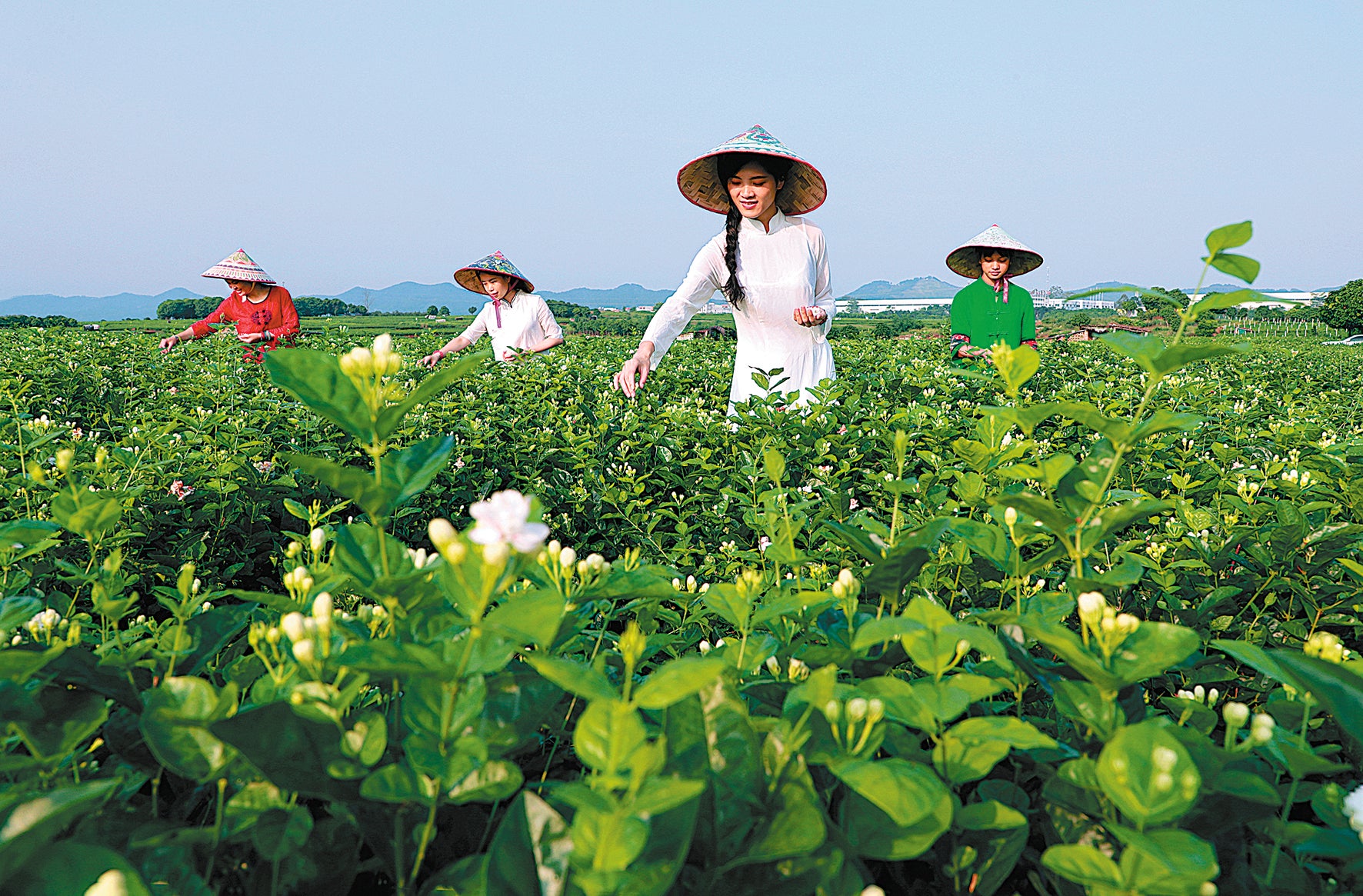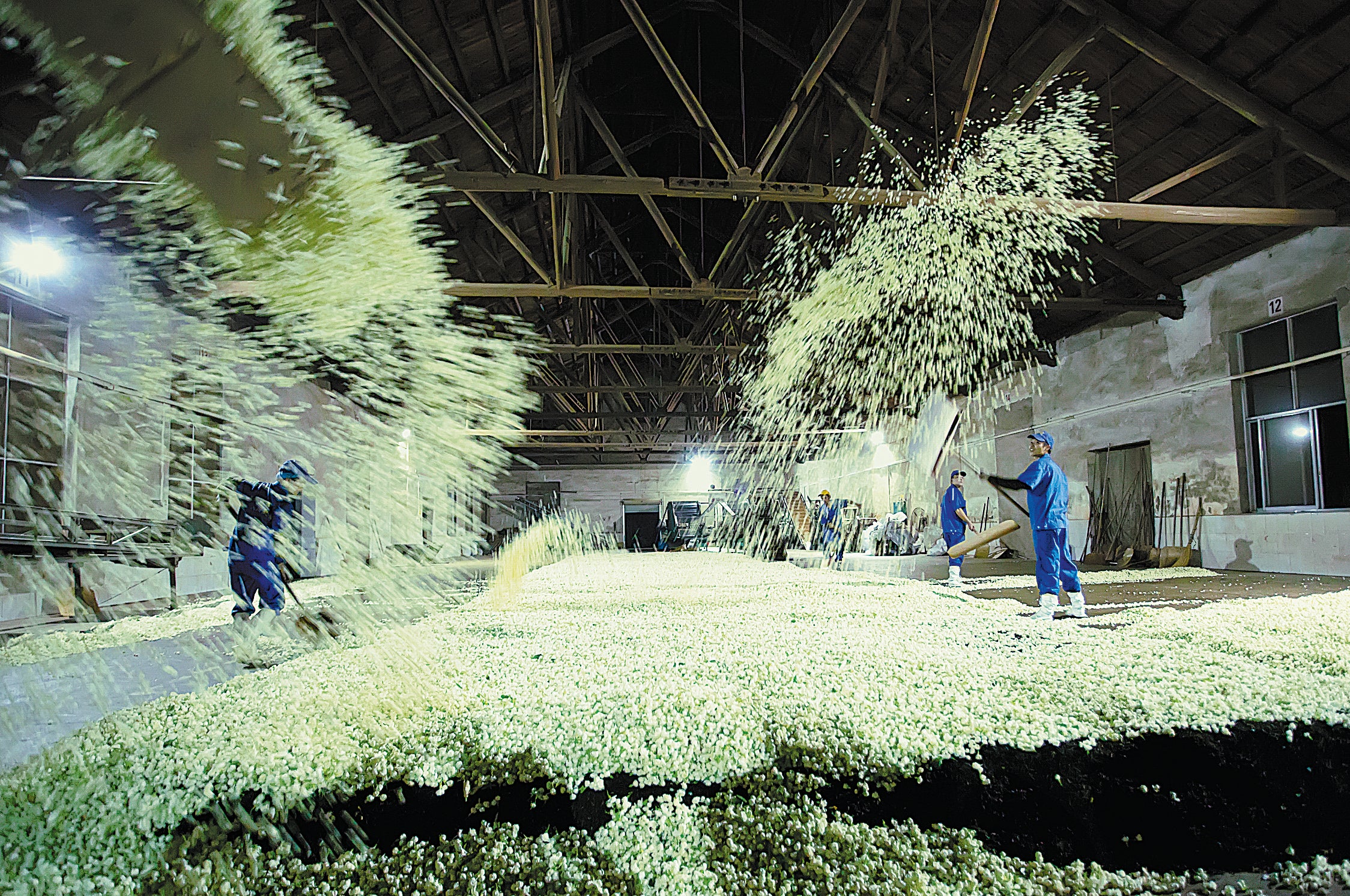Primed for new growth
THE ARTICLES ON THESE PAGES ARE PRODUCED BY CHINA DAILY, WHICH TAKES SOLE RESPONSIBILITY FOR THE CONTENTS

Liang Jinying brushed her hands over the rows of waist-high shrubs, deftly plucking soft white buds from the top of plants under the blazing midday sun.
“They have to be growing at the exact size – not too small and hard, nor opened and in bloom. I can feel them, just nice, between my fingers. It’s about being at the right place and time,” said Ms Jinying, 60, a jasmine bud picker in Hengxian county of South China’s Guangxi Zhuang autonomous region.
The county, which boasts a warm climate and ideal business networks and investment support, produces more than half of the jasmine flowers consumed worldwide. The jasmine is mostly used to scent Chinese teas, which are processed near its planting sites because the flowers must be freshly pressed and infused into dried tea leaves, prompting many in the industry to laud Hengxian as the “jasmine tea capital of the world”.
Jasmine cultivation covers about 19,800 acres in Hengxian, with about 330,000 residents involved in flower planting and farming. The pillar industry helps the county reap about 12.5 billion yuan (£1.5 billion) in comprehensive annual output value.
Lu Hongjian, director of the agriculture bureau of Hengxian county, said that at least 10 million yuan is directed towards development of the crucial sector every year, with more than 500 million yuan invested in recent years in a jasmine industry park, including a planting demonstration base with 823 acres.
“Jasmine tea is the quintessential Chinese beverage,” Lu said. “It is not just drunk wherever there are Chinese people; its fragrance also marks the tables of Chinese cuisine enjoyed by those in the west and others abroad.”

Nearly 200 metric tonnes of tea were exported via Nanning in the first half of the year, including more than 23 tonnes of jasmine tea, mainly to markets such as Japan, the United States, Vietnam and France, with related exports recording a year-on-year rise of nearly 40 per cent, according to data compiled by local customs.
Hengxian’s jasmine tea is poised to reach even more consumers worldwide, following the product’s inclusion on the list of China’s 100 geographical indications under protection in the European Union. The indication is a label for products that have a specific geographical origin with qualities or a reputation due to that origin, according to the World Intellectual Property Organization.
Late last year, China and the EU rolled out measures to protect 100 of the EU’s geographical indications and 100 Chinese geographical indications against imitations.
Weng Rongbin, chairman of Guangxi Jinhua Tea-Industry Co Ltd, heads one of the major enterprises in Hengxian looking to tap the latest opportunities offered by pent-up, post-pandemic demand. Mr Rongbin said that with significant investments in automation, his processing facility, which adds the scent of jasmine flowers to liubao black tea, is set for a fivefold rise in production capacity to 100 tonnes a day.
“The Chinese tea market continues to offer huge potential in markets like South-east Asia and beyond,” said Weng, whose enterprise has more than 300 employees and brings in 100 million yuan in sales a year. “With the latest geographical listing, we’ll focus on remaining at the forefront of the industry. We are investing in research and development, considering fast-growing, higher-yielding products like milk tea that are popular among younger consumers.”
Previously published on Chinadaily.com.cn
